AMD A8-3850 : An HTPC Perspective
by Ganesh T S on June 30, 2011 6:20 AM ESTThe AMD 6550D is able to detect all the cadence patterns in the HQV benchmark Blu-ray. Moving beyond HQV, we have a more sterenuous clip from the Spears and Munsil High Definition Benchmark Test Disc (hereon referred to as the S&M). In this section, we first present screenshots from putting the 2-3-2-3 cadence detection / deinterlacing 'Wedge' test clip.
It was fascinating to put this clip through the paces. When starting out playback with MPC-HC, the framesteps followed the 2-3 cadence pattern indicating that the GPU had locked onto the cadence. However, as the wedge starts its descent, the lock gets lost only to be regained on the way back. This repeats for two revolutions, but the third time onwards, the lock gets permanently lost. Contrast this with the GT 430's behavior which retains the locked cadence all through, and the 6570 which loses it only momentarily around the same timestamp, but regains it later.
You can roll the mouse over the images below to get views of segments of the full size lossless version. This will make it easier to observe the Moire pattern and how the deinterlacing fails once the cadence lock is lost.
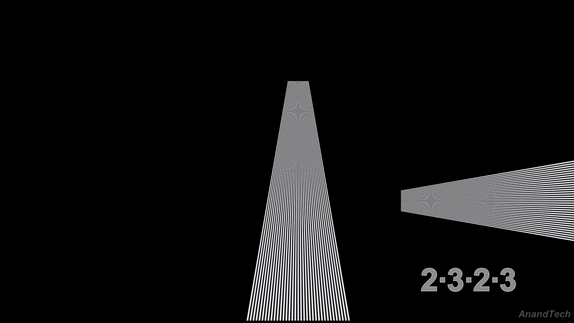
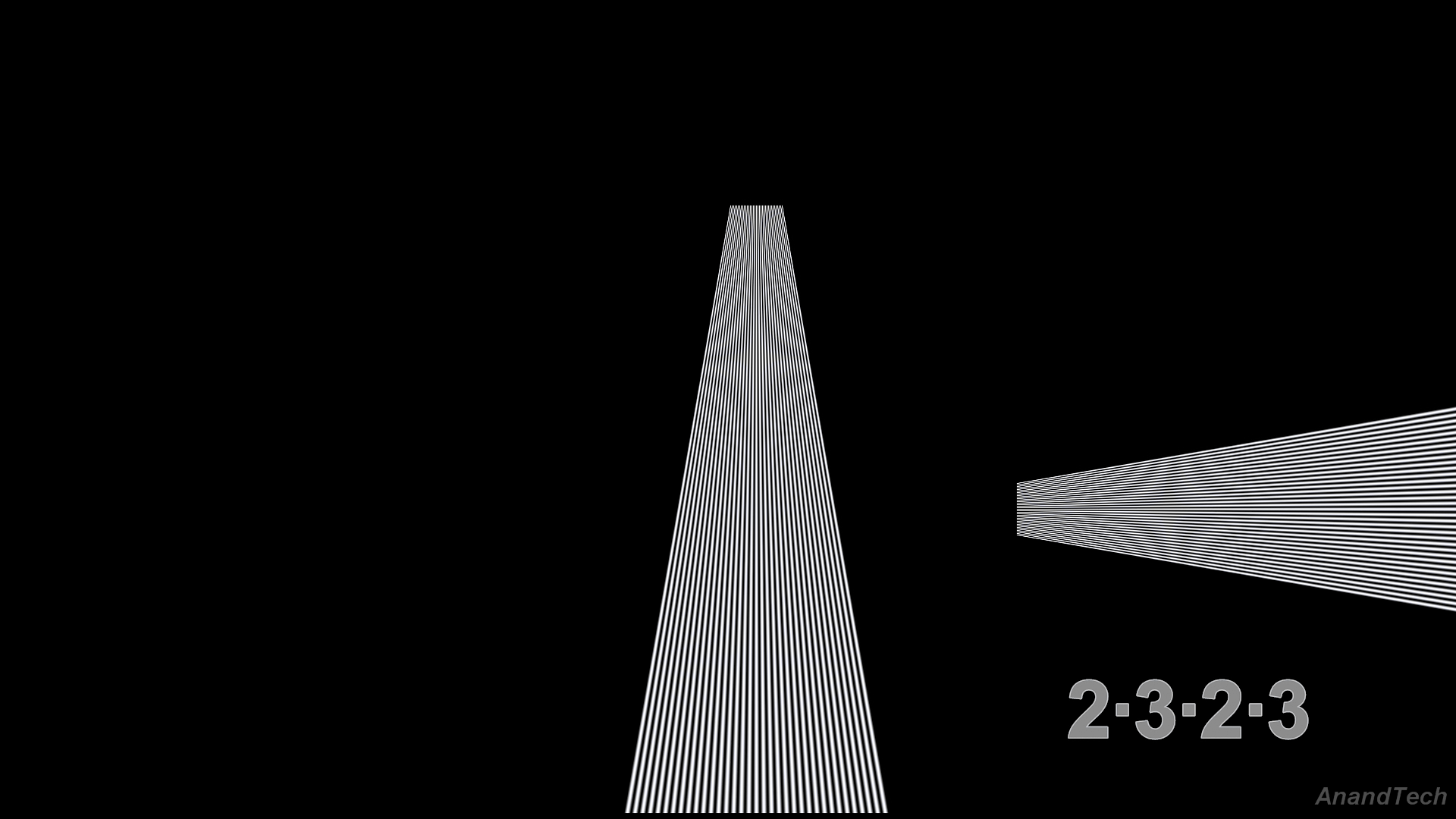
Cadence Locked
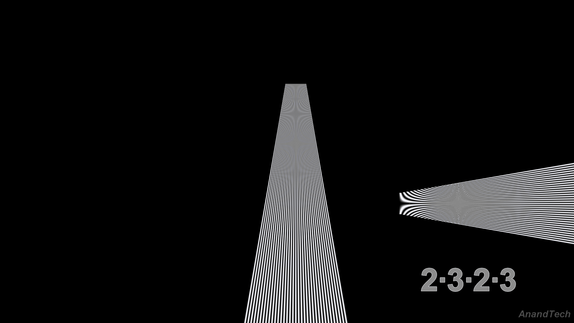
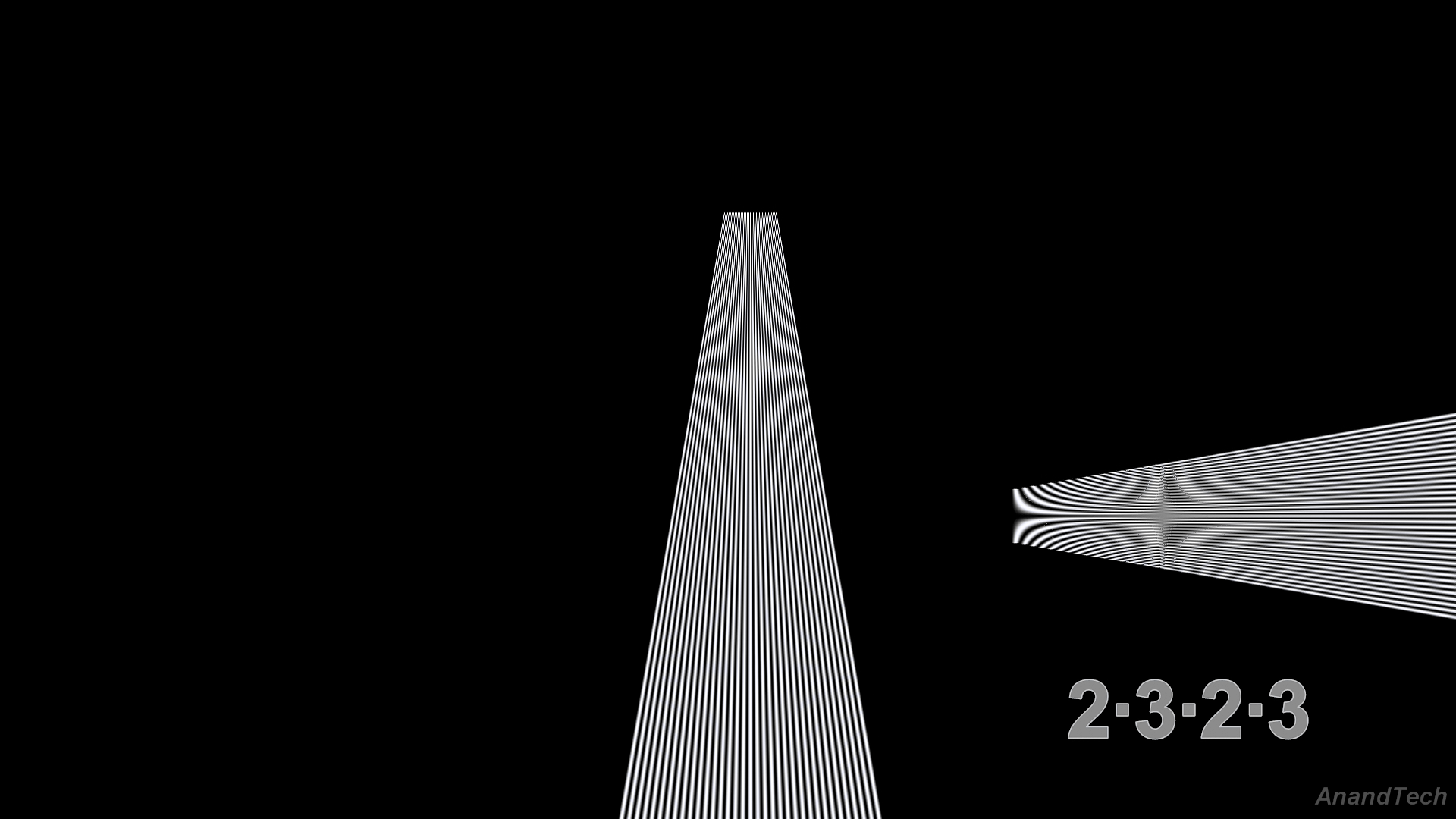
Cadence Lost
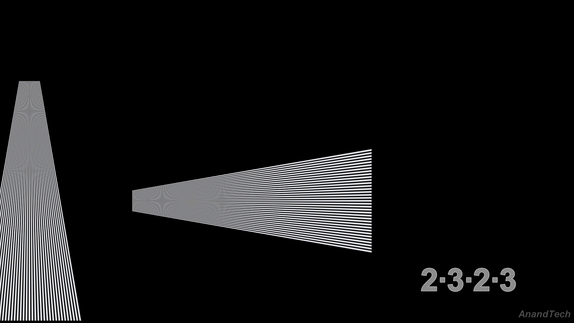

Cadence Regained
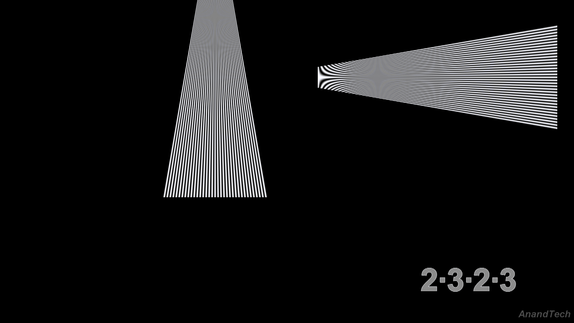
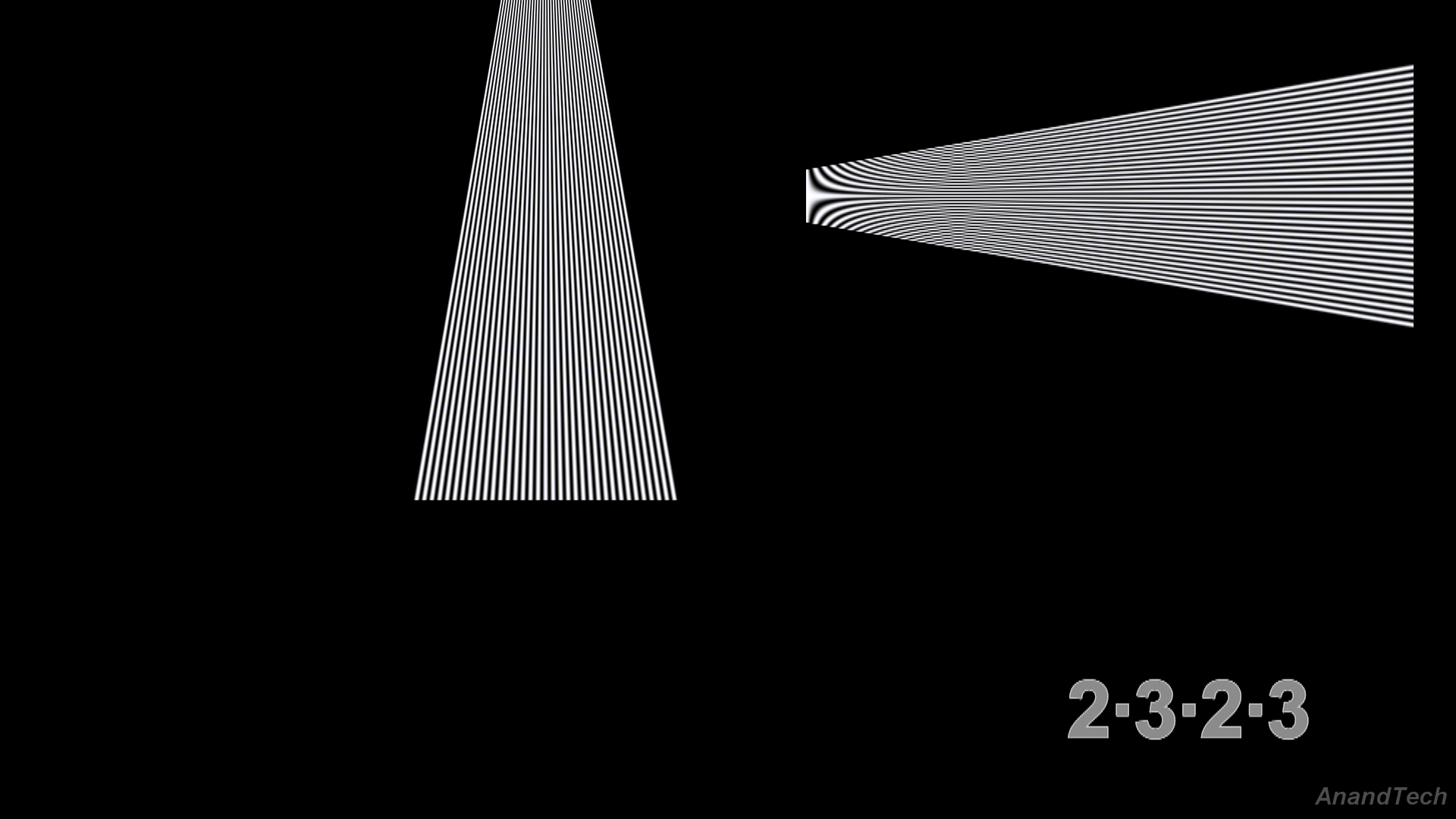
Cadence Permanently Lost
What is the takeaway from this experiment? Cadence detection will probably work for the more common scenarios, but don't be surprised if you encounter some streams which fail.
The more interesting aspect is the deinterlacing quality. Let us take a look at the artificial Cheese Slices first. A sample deinterlaced frame is provided below.
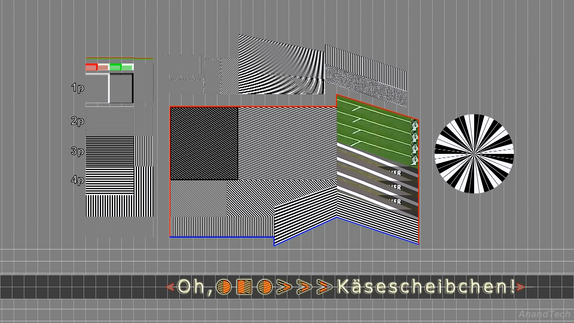
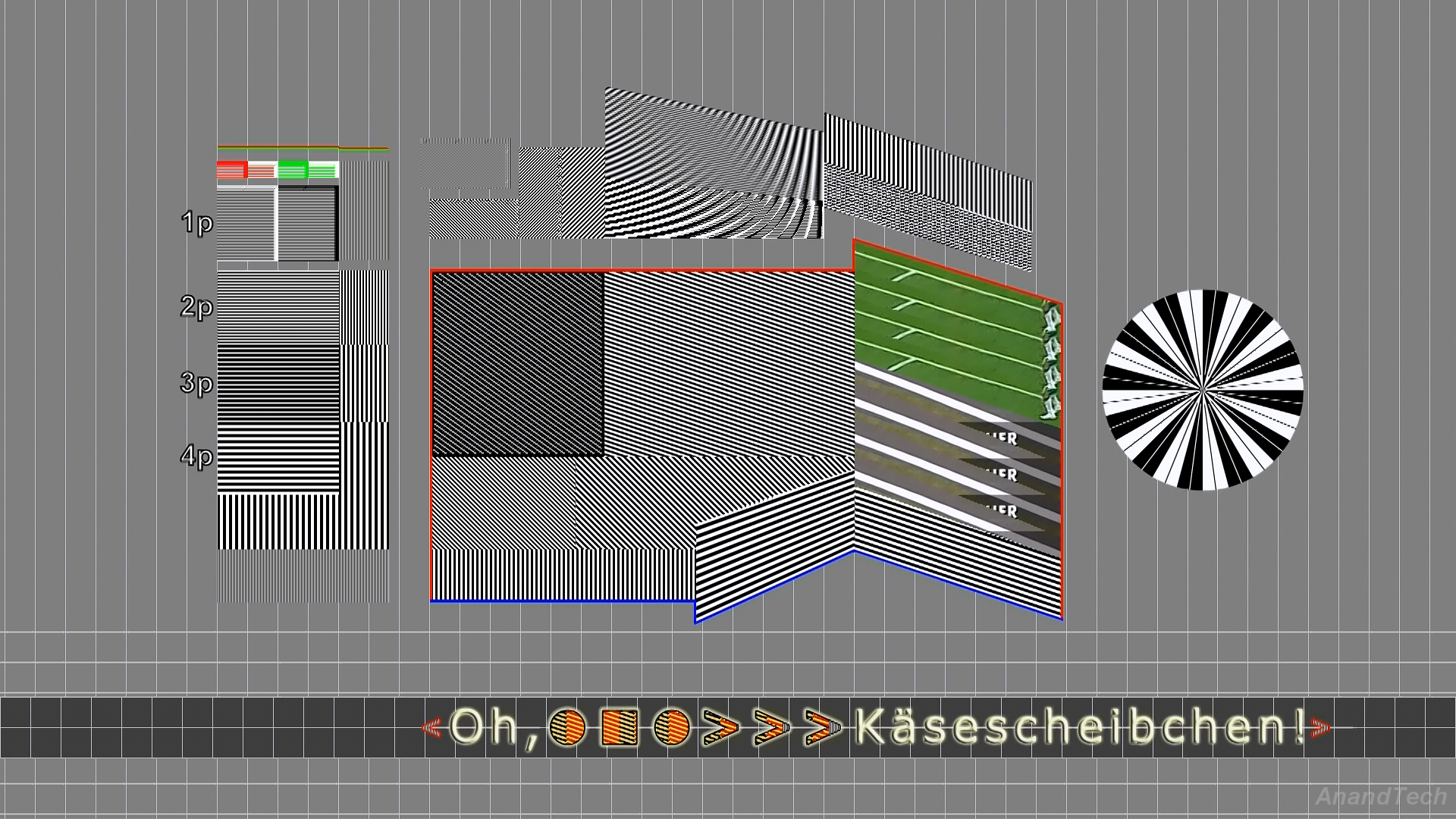
AMD 6550D's Vector Adaptive Deinterlacing
Now, let us compare Intel HD 3000 Graphics and the AMD 3550D with respect to the various deinterlacing aspects.
Deinterlacing - Video Reference:
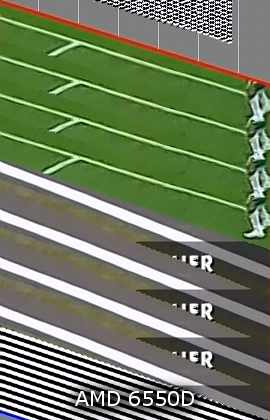
| AMD 6550D | Intel HD3000 |
Deinterlacing - Cheese Slice Ticker:

| AMD 6550D | Intel HD3000 |
Deinterlacing - Noise Response:
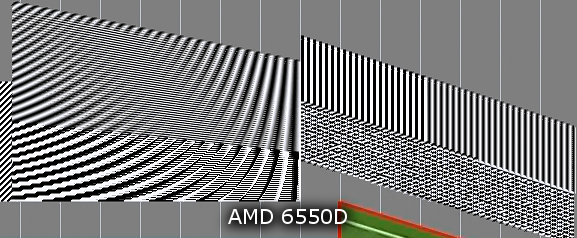
| AMD 6550D | Intel HD3000 |
Deinterlacing - Algorithm Type:
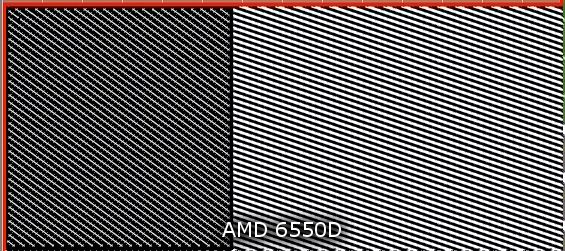
| AMD 6550D | Intel HD3000 |
Deinterlacing - Disc Test:
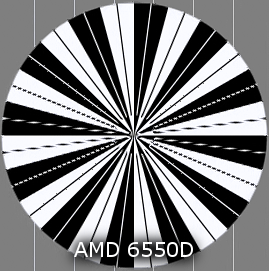
| AMD 6550D | Intel HD3000 |
Except for a certain segment in the noise response section, it looks like the AMD algorithm works much better than Intel's for the Cheese Slices test.
How does edge adaptive deinterlacing work? Here are screenshots made while playing back the boat clip from S&M on the Intel HD 3000 and the AMD 6550D.

| AMD 6550D | Intel HD3000 |
From a deinterlacing perspective, the AMD 6550D looks better. However, the default video post processing settings with ESVP seem to wash out the details (for example, near the shoreline) when compared to the Intel HD 3000.










104 Comments
View All Comments
Targon - Friday, July 1, 2011 - link
New vs. open box....it's like comparing the price of a used car vs. a new car, it's not in the same market.Yes, a car that is three years old drops in value by 45-55 percent, so you can get a used car that is better in most respects for the same money, but who knows how the original owner treated the car, if there are problems, etc. Buying new vs. used....
You will be able to get an open box AMD motherboard for super-cheap too, so where's your advantage once THAT happens?
maroon1 - Friday, July 1, 2011 - link
Obviously, 4GB DDR3 1600MHz for $38 is going to have poor timing, and it is not going to performs as good as the one that anandtech tested
rockrr - Saturday, July 2, 2011 - link
I’m not a technowiz like many of the AT readers are, (I read AR to learn.) I am a gamer and build my own machines. I agree that the ability to upgrade CPU and GPU separately is cost effective and allows for customizing for the best performance to suit your needs. Also it allows for recycling of components to upgrade other systems.Anato - Thursday, June 30, 2011 - link
Couldn't agree more. There is feeling that no way AT could let AMD to be good at something. In mobile market there was this magical performance metric i7-2630QM+GTX460M (which obviously is not a competitor to Llano) on top of the char.And yes AMD is not as good as Intel at x86 but the whole point of Llano is different. AMD clearly chose to set more area for the GPU and make it affordable as a platform.
In general would be better to compare what user can get with given price range. CPU-price is only 1/2 of the story, then there is motherboard and Intel chipped motherboards are generally more expensive.
prdola0 - Thursday, June 30, 2011 - link
That is entirely untrue now. It used to be the case but that time is now gone (it has been for a while, but you obviously missed it). It gets even better with H61.maroon1 - Friday, July 1, 2011 - link
No one would buy a P67 unless you want to use discrete GPUA good quality H67 can be found as cheap as $75
http://www.newegg.com/Product/Product.aspx?Item=N8...
And H61 cost only $60
http://www.newegg.com/Product/Product.aspx?Item=N8...
http://www.newegg.com/Product/Product.aspx?Item=N8...
ganeshts - Thursday, June 30, 2011 - link
duploxxx, I agree wtih you on almost all the points.But, AMD has a good discrete GPU background now and taken in that context, the HTPC performance is not up to the mark.
People don't care about post processing if they can't even play their camcorder videos. With a proper dGPU (targeted towards HTPCs), they can play and also get post processing done on the same clip. Why is the ESVP feature enabled by default when it doesn't work as intended?
When I heard about the high end Llano, I expected it to fully replace the discrete HTPC GPU. Unfortunately, that is not happening (pending some magical driver updates?)
kev18 - Thursday, July 7, 2011 - link
i second the comment made.....I have an AMD based HTPC already......i was excited to hear the new integrated CPU/GPU and may be it is time to upgrade..... but after hearing the problem playing files on hard drive, I think i willl wait for this to be more mature before buying........may be i should consider buying a 6xxx GPU card so that i can get HD-DTSGigantopithecus - Thursday, June 30, 2011 - link
Thanks for the review, Ganesh. I have a quick question: though the Antec Skeleton is a far less than ideal testbed for an HTPC, do you have any numbers or subjective impressions of the noisiness of the stock HSF?Also, from your reported power consumption numbers, your setup should run on an external power brick or picoPSU. The Antec PSU you used is a bottom-barrel model that's not even 80+, and during local HD file playback, is pulling ~10% of the PSU's rated output. That is, you're at the bottom end of the efficiency curve of a non-efficient PSU. It would be nice to see idealized or even more accurate power consumption numbers. Furthermore, I understand that you can only benchmark what you're actually sent, but as an HTPC builder, I'm having trouble thinking of a scenario when I would use the A8-3850 for HTPC duties...
Finally, when you say "our expectations from the desktop Llano were much higher," well, what were you expecting? The issues with BRD and HD video file playback all sound like software, not hardware problems. Llano's not for sale on Newegg, so hopefully AMD will work out the kinks with its partners before or shortly after retail availability. I personally am extremely impressed by the power consumption numbers. Depending on the cost of the lower-end Llano SKUs and assuming they provide good enough computing (I can't wait for an HD 6410D APU to be tested), I'll likely cease building i3-based HTPCs.
ganeshts - Thursday, June 30, 2011 - link
We were provided an ATX motherboard for review with the 100W TDP processor. Our benchmarking setup was chosen with future reviews in mind too. We had no idea is mind how the power consumption numbers would play out before choosing the PSU.Today is the launch date for the processor. So, this review is just an inkling of how the 6550D (which is also there in the A8-3800 with 65W TDP) will perform currently for HTPC duties. It is targeted towards DIYers who want to build a HTPC right away (and our conclusion is, wait and watch for a few driver releases).